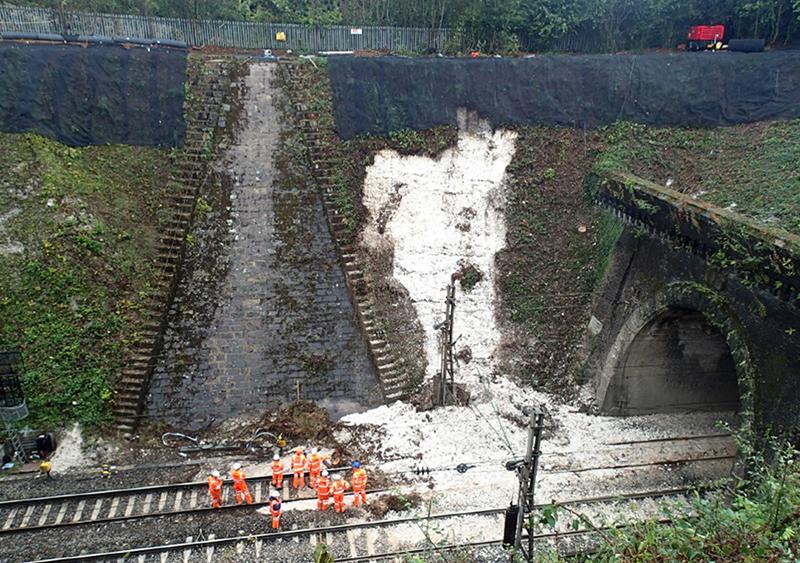On 4 February 1940, a passenger train approaching Watford tunnel struck a landslip containing 800 tonnes of earth and derailed. The impact telescoped together two carriages, throwing seats through the roof, and one passenger – a woman on her way home from a wedding – was killed.
A contributory factor to the landslip was lack of drainage to move water away from the vulnerable earthwork. We know this because, after the incident as part of the repair work, plans were drawn up to install a drainage system to reduce the risk of further failures.
76 years later, on 16 September 2016, a passenger train struck a landslip at virtually the same location. The train derailed but carried on travelling into the tunnel where it was struck a glancing blow by a train travelling in the opposite direction. Only quick action by the drivers and – if we are honest – luck, prevented a head-on collision. As it was, the passengers and crew escaped serious injury.
But what about that drainage system planned in the 1940s? Well, a wall was built into the face of the cutting, but there was no crest drain to direct water onto it. So the water, which concentrated at the top of the cutting, had nowhere to go other than into the earthwork and down its face. The result was a landslip that could have had catastrophic consequences.
Getting the inspection regime right
Nearly three years on from Watford, ORR’s attention remains focused on ensuring that Network Rail effectively manages drainage assets in high-risk earthworks - those are earthworks in a location or condition that present a higher likelihood of a catastrophic incident, if they fail.
We are also assessing other possible ‘Watfords’ – locations where the existence of, and need for, drainage near tunnel portals is yet to be established. Network Rail needs to make sure that, where it is needed, drainage is of sufficient capacity and functional.
Drainage is not a topic that gets the pulse racing. Nonetheless, proper maintenance of drainage assets is fundamental to the safe operation of the railway. And that is why ORR continues to focus on helping Network Rail to get this right as a key part of our work to keep rail travel as safe as possible.
Watford cutting failure, 2016.



